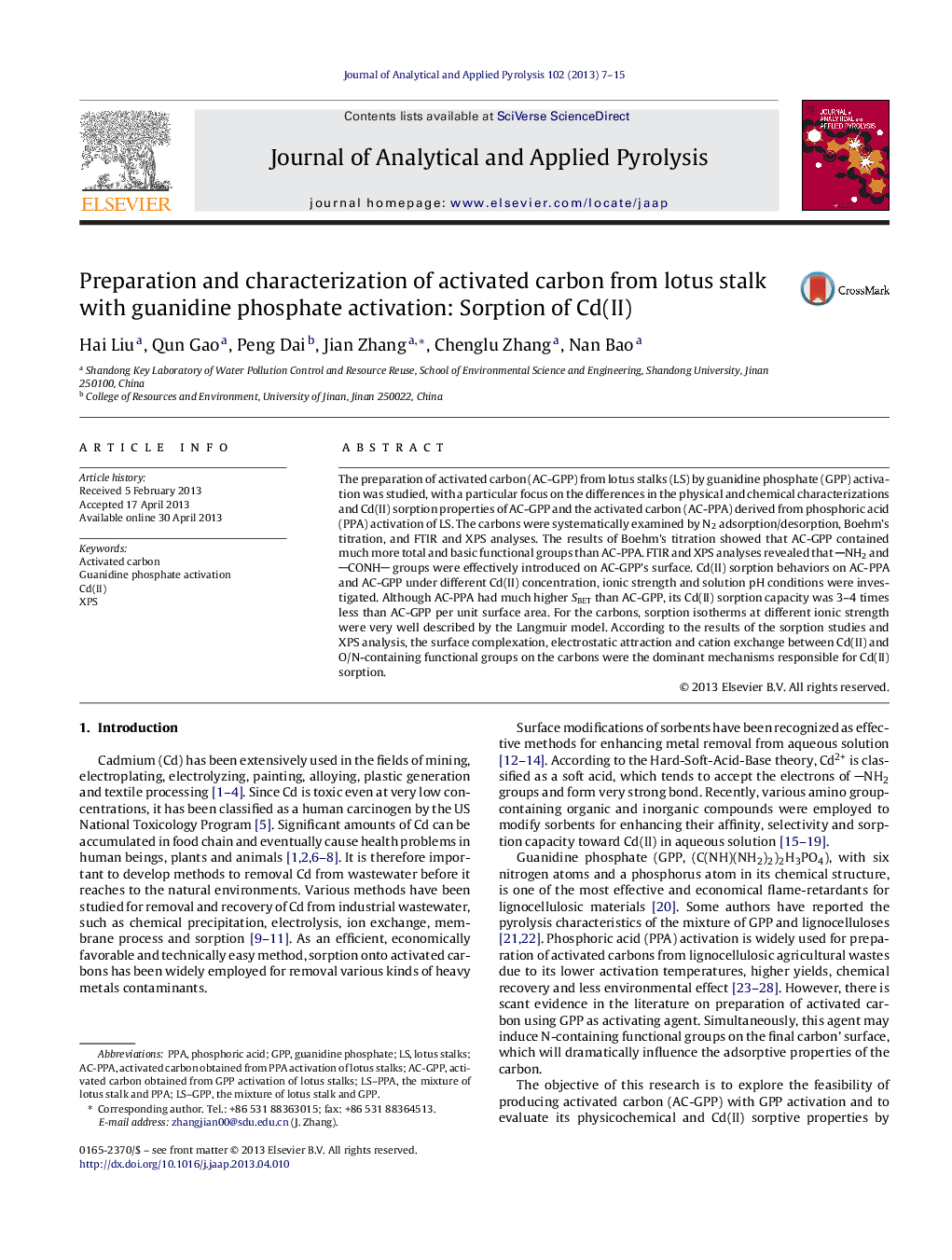| کد مقاله | کد نشریه | سال انتشار | مقاله انگلیسی | نسخه تمام متن |
|---|---|---|---|---|
| 1196882 | 1492975 | 2013 | 9 صفحه PDF | دانلود رایگان |

• GPP was used as a new activating agent to produce activated carbon.
• AC-GPP contained much more total and basic groups than AC-PPA.
• OCNH and CNH2 groups were effectively introduced onto the surface of AC-GPP.
• AC-GPP showed higher Cd(II) sorption capacities than AC-PPA.
• Sorption mechanisms: complexation, cation exchange and electrostatic attraction.
The preparation of activated carbon (AC-GPP) from lotus stalks (LS) by guanidine phosphate (GPP) activation was studied, with a particular focus on the differences in the physical and chemical characterizations and Cd(II) sorption properties of AC-GPP and the activated carbon (AC-PPA) derived from phosphoric acid (PPA) activation of LS. The carbons were systematically examined by N2 adsorption/desorption, Boehm's titration, and FTIR and XPS analyses. The results of Boehm's titration showed that AC-GPP contained much more total and basic functional groups than AC-PPA. FTIR and XPS analyses revealed that NH2 and CONH groups were effectively introduced on AC-GPP's surface. Cd(II) sorption behaviors on AC-PPA and AC-GPP under different Cd(II) concentration, ionic strength and solution pH conditions were investigated. Although AC-PPA had much higher SBET than AC-GPP, its Cd(II) sorption capacity was 3–4 times less than AC-GPP per unit surface area. For the carbons, sorption isotherms at different ionic strength were very well described by the Langmuir model. According to the results of the sorption studies and XPS analysis, the surface complexation, electrostatic attraction and cation exchange between Cd(II) and O/N-containing functional groups on the carbons were the dominant mechanisms responsible for Cd(II) sorption.
Journal: Journal of Analytical and Applied Pyrolysis - Volume 102, July 2013, Pages 7–15